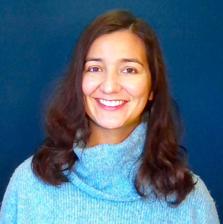DESY scientist Sadia Bari has been appointed professor at the University of Groningen. (Image: DESY)
DESY has just sealed its first joint professorship agreement with a university outside of Germany: Research Group Leader Sadia Bari has just been appointed professor at the University of Groningen in the Netherlands. Bari returns to her academic roots: after studying and doing her PhD at Groningen university herself, she will now teach physics to undergraduate and graduate students.
Sadia Bari’s scientific specialty is to decipher physical processes in biomolecules, for example in proteins or DNA, with the help of X-ray light. She will be able to pass on her knowledge of and passion for fundamental science to students at the University of Groningen in the Netherlands soon: with the joint professorship agreement signed in autumn, DESY has found its first international university partner. These agreements are relatively common with German universities, and of course DESY cooperates with countless universities and institutes around the world. However, Sadia Bari’s call to the University of Groningen is the first cross-border joint professorship.
“We are very pleased since Sadia Bari is DESY's first joint professorship with a European university,” says Edgar Weckert, DESY’s Director in charge of Photon Science, about this appointment. “I am sure both DESY and University Groningen will benefit greatly from this official cooperation.”
“We are proud and very happy that we can join forces with Sadia Bari and DESY in this manner,” says Caspar van der Wal, scientific director of the Zernike Institute for Advanced Materials in Groningen. “The expertise of Sadia and the use of the light sources at DESY is important and inspiring for our education and research. This will further stimulate our collaboration on this in our European region.”
Sadia Bari knew two things when she was a 13-year-old student in Gütersloh in Germany: that she was going to be a sailor, and that she was going to be a physicist. She had done some “light reading” during the summer– Black Holes: The Edge of Space, The End of Time by Walter Sullivan – and bombarded her physics teacher with questions after the holidays. He gave her his old textbooks to read, and her choice for a scientific career was made. However, after finishing school, she first signed on as a sailor on a traditional flat-bottomed Dutch boat; her other passion. With the University of Groningen in the north of the Netherlands, close to the East Frisian border, she found a university that would allow her to follow both passions. She ended up doing not only her master’s but also her PhD thesis there, investigating biomolecules with the help of an ion beamline.
The biomolecules and beamlines have been with her ever since, through a few postdocs and positions to the one as a Helmholtz Young Investigator Group Leader in Simone Techert’s group in DESY’s photon science division. She still studies the behaviour of biomolecules in the gas phase to answer fundamental questions like why a biomolecule looks the way it does, what influences it is exposed to, or what happens when it interacts with light. “Our main goal is to fundamentally understand molecules,” Bari explains. Her research is fundamental science, but with the many existing and future research cooperations at DESY and the Bahrenfeld Campus, these studies are never far from an application, for example within the Centre for Molecular Water Science CMWS. “These interdisciplinary research cooperations, including also the CUI:AIM excellence cluster or the Centre for Free-Electron Lasers CFEL, offer many fascinating research opportunities, and I am happy to help build another academic bridge with the new agreement.”







